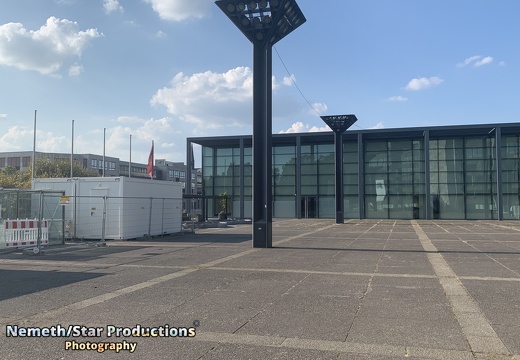Nemeth/Star Productions - Picture Gallery









Legal Notice
Privacy
© Nemeth/Star Productions 2025
Mainz is the capital and largest city of Rhineland-Palatinate, Germany. Mainz is on the left bank of the Rhine, opposite to the place that the Main joins the Rhine. Downstream of the confluence, the Rhine flows to the north-west, with Mainz on the left bank, and Wiesbaden, the capital of the neighbouring state Hesse, on the right bank. Mainz is an independent city with a population of 218,578 (as of 2019) and forms part of the Frankfurt Rhine-Main Metropolitan Region. Mainz was founded by the Romans in the 1st century BC as a military fortress on the northernmost frontier of the empire and provincial capital of Germania Superior. The Rheingoldhalle in Mainz was realized from 1965 to 1968 on the Halleplatz on the banks of the Rhine near the Theodor Heuss Bridge by the Mainz architect Heinz Laubach. On the site of the Rheingoldhalle stood the Stadthalle until February 1945. The inauguration of the Rheingoldhalle took place on November 9, 1968. Today, the hall, together with the City Hall and the Hilton Hotel, forms a complex originating from the modern era. In January 2022, the Rheingoldhalle was reopened after 38 months of renovation and expansion. The Rheingoldhalle was for a time the venue for the television carnival joint show Mainz bleibt Mainz, wie es singt und lacht (Mainz remains Mainz, as it sings and laughs) and frequently the venue for party conventions, e.g. of the FDP in November 1978. Mainz Cathedral or St. Martin’s Cathedral (German: Mainzer Dom, Martinsdom or, officially, Der Hohe Dom zu Mainz) is located near the historical center and pedestrianized market square of the city of Mainz, Germany. This 1000-year-old Roman Catholic cathedral is the site of the episcopal see of the Bishop of Mainz. Mainz Cathedral is predominantly Romanesque in style, but later exterior additions over many centuries have resulted in the appearance of various architectural influences seen today. It comprises three aisles and stands under the patronage of Saint Martin of Tours. The eastern quire is dedicated to Saint Stephen. The interior of the cathedral houses tombs and funerary monuments of former powerful Electoral-prince-archbishops, or Kurfürst-Erzbischöfe, of the diocese and contains religious works of art spanning a millennium. The cathedral also has a central courtyard and statues of Saint Boniface and The Madonna on its grounds. Text Source: Wikipedia
Powered by Piwigo

















